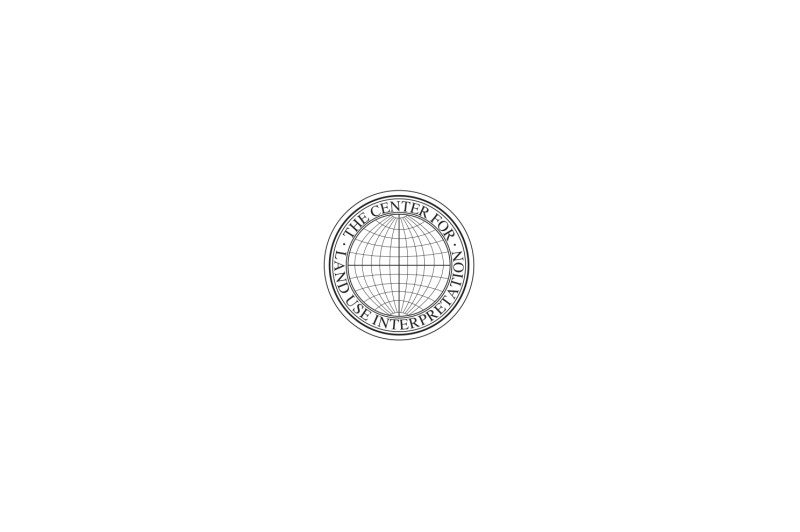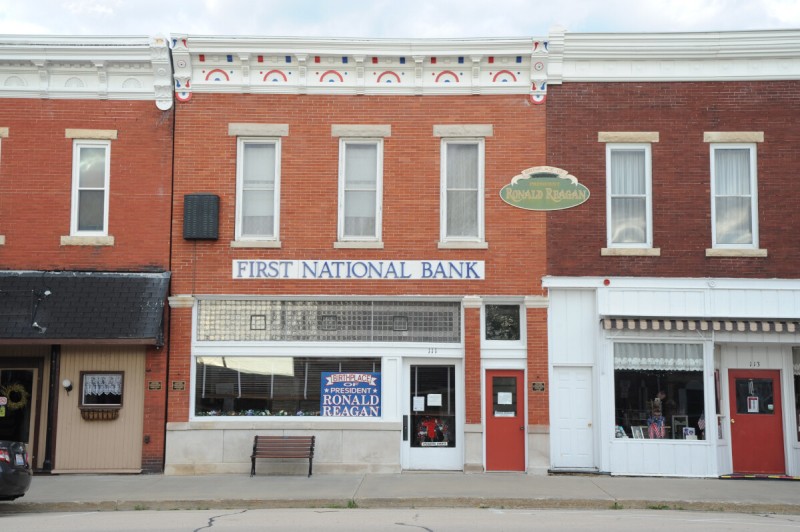
Ronald Reagan was born in 1911, in an apartment above a tavern in the small town of Tampico, Illinois. Two months later, his family moved into a house down the street.
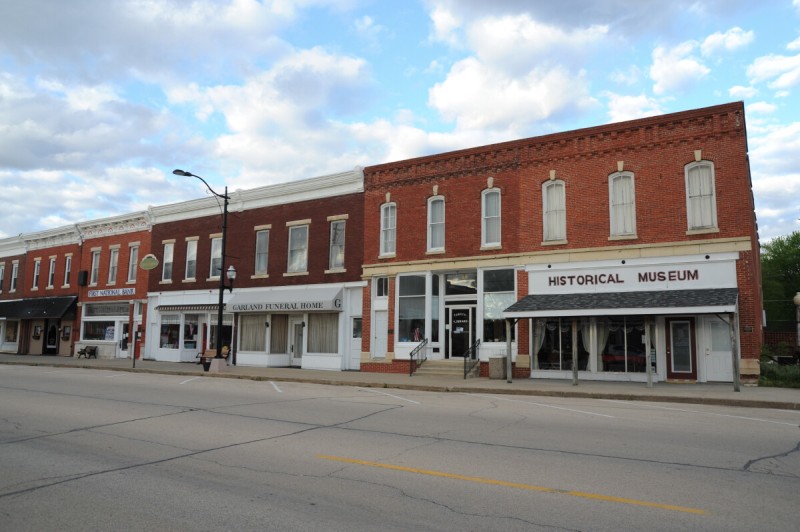
Over the following years, several businesses downstairs and tenants upstairs moved in and out. In 1920, the First National Bank bought the building, closing its doors later in the Depression, but leaving its sign. The building was mostly vacant after that, as were others in this small main street.

Interest in restoring and commemorating the birthplace building began when Reagan ran against Ford in the primaries in 1976. Reagan visited the building for the first time since being born there, and declared it a symbolic hometown campaign office.
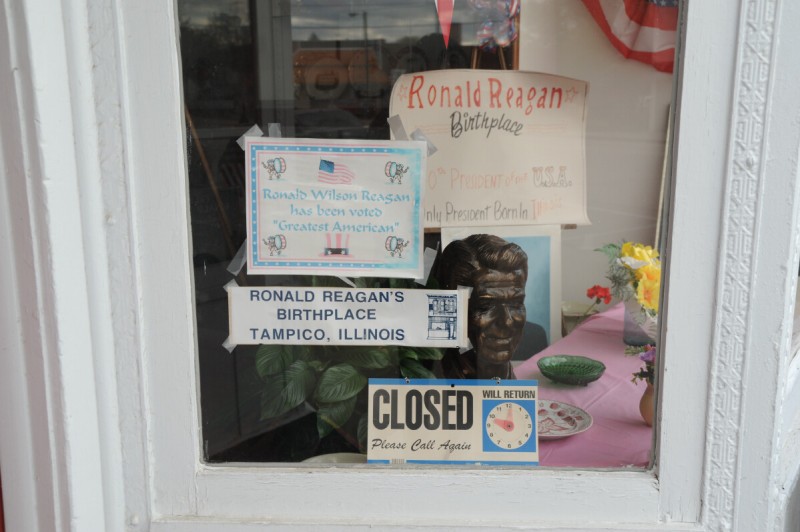
Efforts lost steam when Carter won the election, but redoubled in 1980, when Reagan ran against Carter, and won. In 1982, the downtown was designated a historic district, and the owners opened up the site for visitation as the Ronald Reagan Birthplace Museum, though Reagan did not return again until 1992.

There is a small museum and gift shop on the block, and some commemorative markers and murals around town, but visitation remains fairly limited.
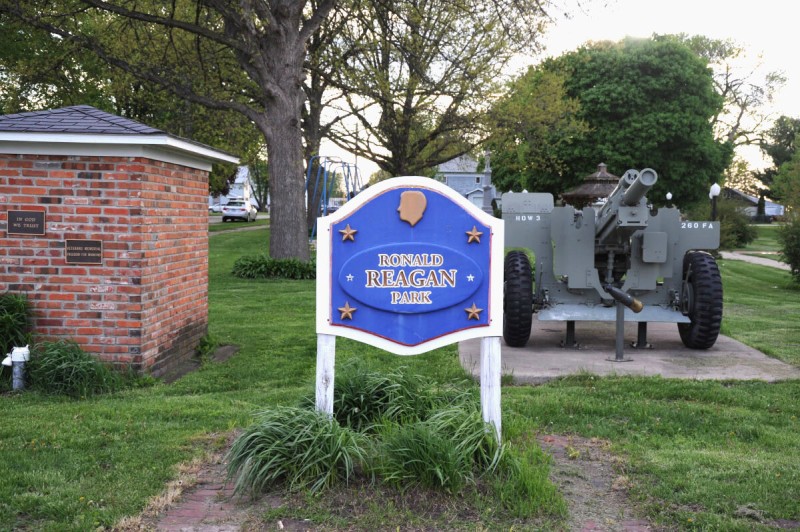
The park in town is named after him, and has a cannon that he recalled playing on as a child.
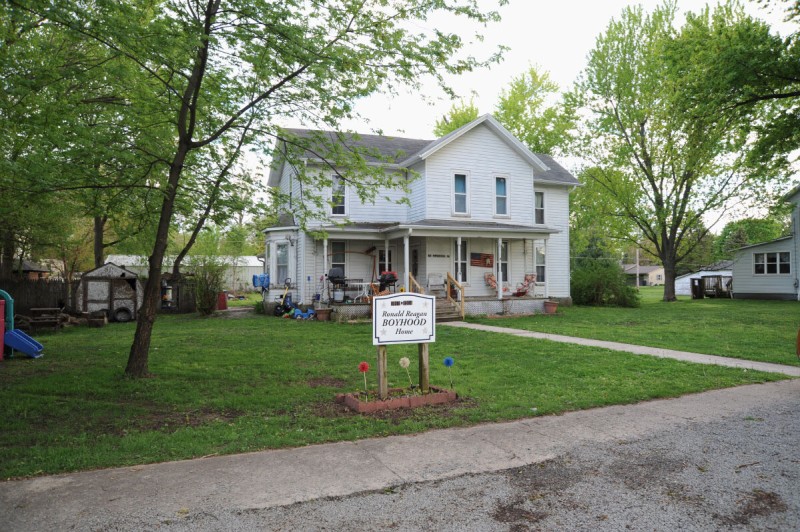
The park is across the street from a house he moved into with his parents after his first two months of life, above the tavern. The house is still privately owned and occupied.
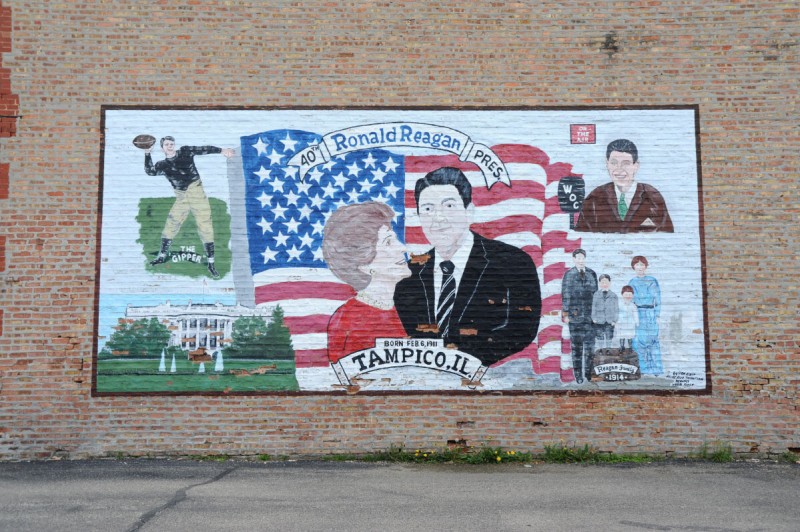
Reagan’s father was a salesman, and the family moved a lot around northern Illinois. When he was nine years old they settled in Dixon, Illinois, where he lived until he was 21. After that he went to college, then took jobs as a traveling radio announcer, and ended up doing a screen test at Warner Brothers in 1937, beginning his acting/political career.

The place that tells his official story in the greatest detail is his presidential library and museum in Simi Valley, located between Hollywood and his ranch in the mountains above Santa Barbara.

The library is the largest of the thirteen presidential libraries administered by the National Archives. When it opened in 1991, five presidents and six first ladies were on hand for its dedication, the largest collection of presidential personalities ever assembled in one place.
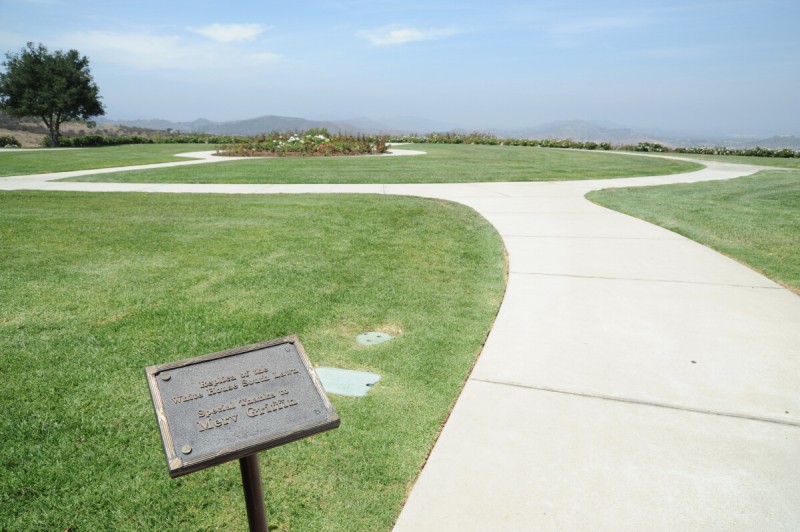
Though the Clinton Presidential Library holds more documents, the Reagan Library has more space, covering nearly 250,000 square feet, including the hangar that covers his Boeing 707 Air Force One.
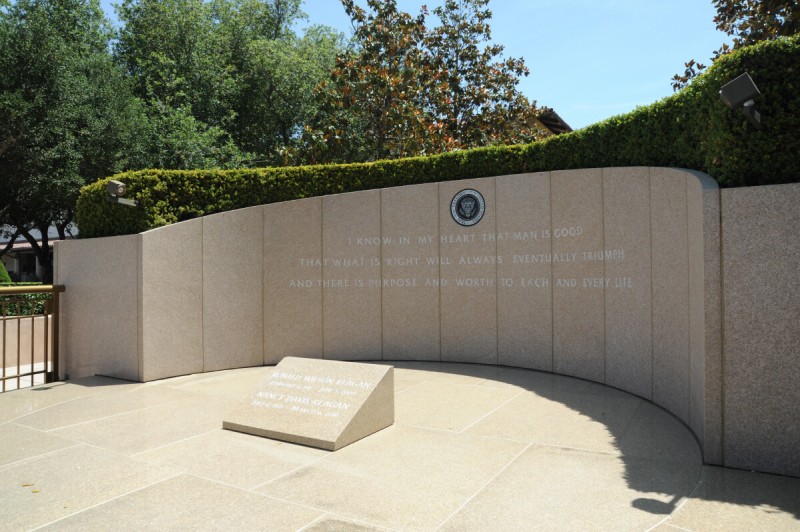
When Reagan died in 2004, his body was flown from California to Washington DC for services there, then back to California, where it was driven up to the library from Point Mugu Naval Station, and placed in his tomb.
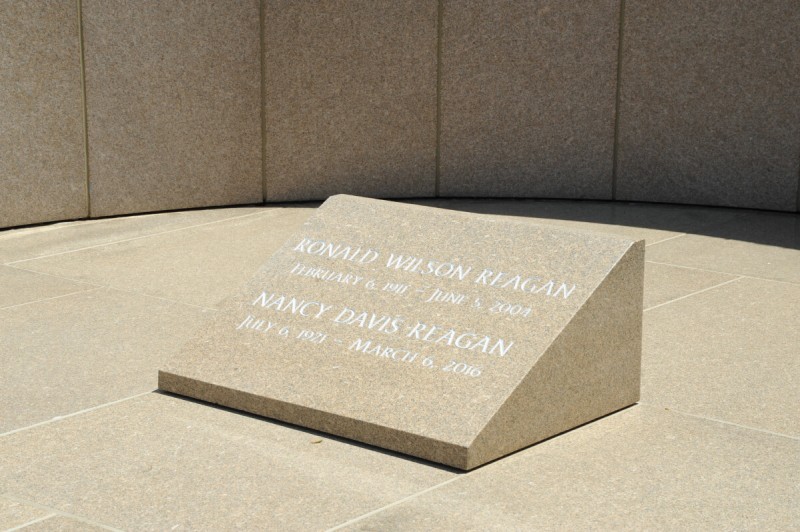
He was joined there by his wife Nancy, in 2016.
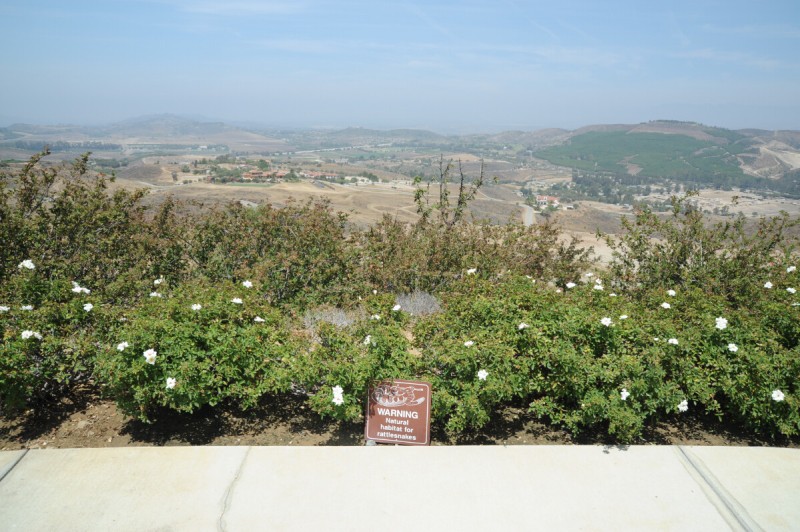
Though Reagan is buried there, he had little direct connection to Simi Valley itself.
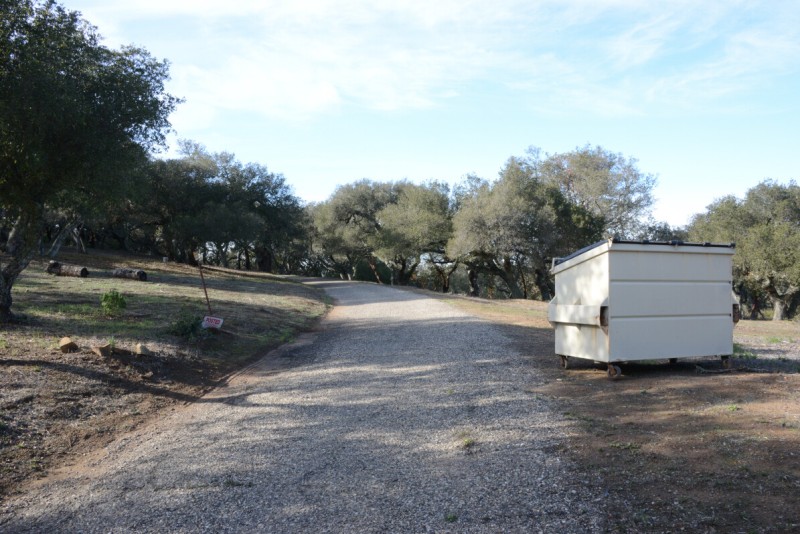
His favorite place was his ranch at the top of the Santa Ynez mountains above Santa Barbara, which he owned since 1974, and where he operated a Western White House while in office.
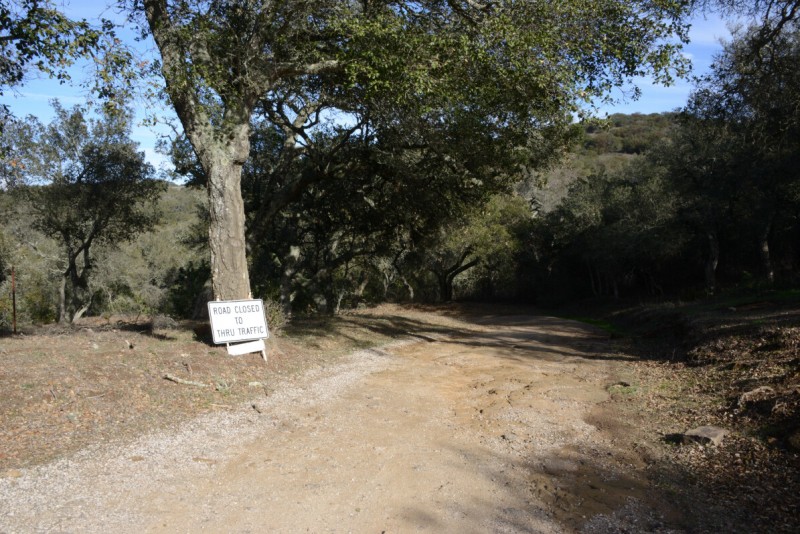
Reagan often went there after leaving office in 1989, but within a few years he was too frail to enjoy it. He spent most of his final years at his 7,000 square-foot house in Bel Air.
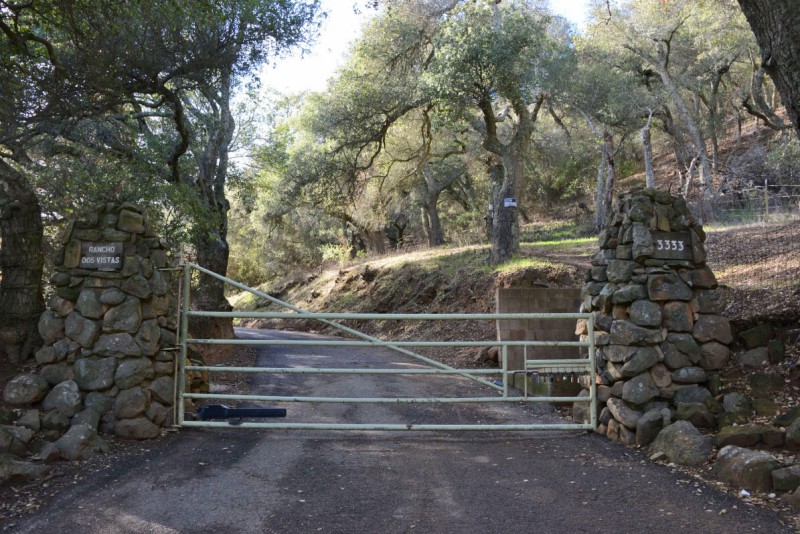
In 1998, the ranch was sold to the Young America’s Foundation, a conservative student outreach organization, that uses it occasionally for retreats and conferences, but primarily owns it as a Republican landscape trophy, a preserved pilgrimage site, off limits to the public.
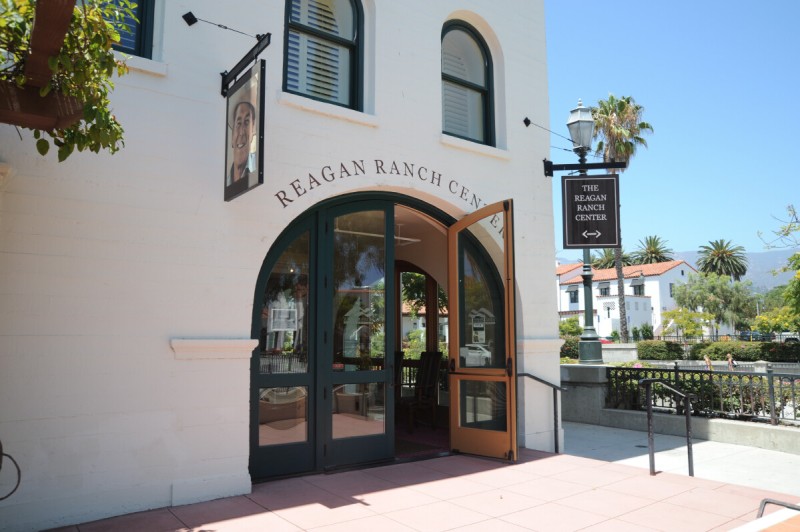
The Foundation operates an interpretive center for the Ranch in downtown Santa Barbara.

Inside are displays about the site that tell its story in some detail.
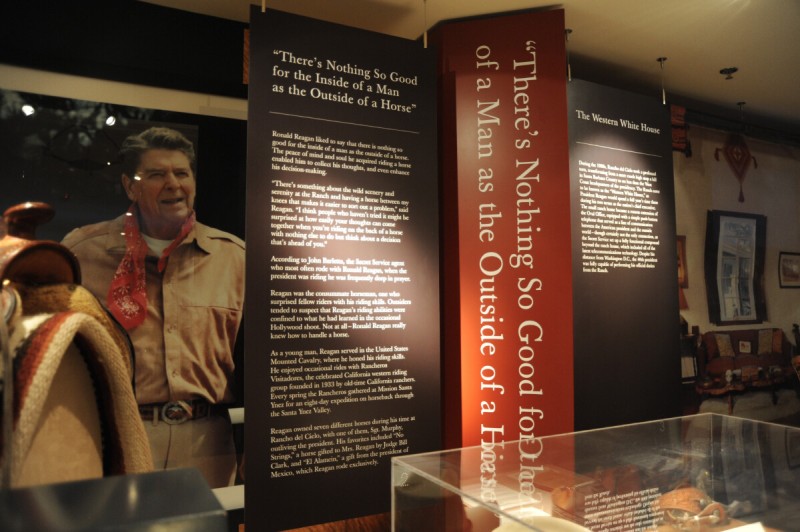
When the Reagans purchased the 688-acre site in 1974, it was known as the Tip Top Ranch, as it spans the crest of the mountains, with views to the ocean north of Santa Barbara in one direction, and to the Santa Ynez Valley wine country in the other. The moist winds from the ocean meet the hot dry air of the inland valley, often forming mists that enshroud the hills. Reagan renamed it Rancho del Cielo (Sky Ranch).
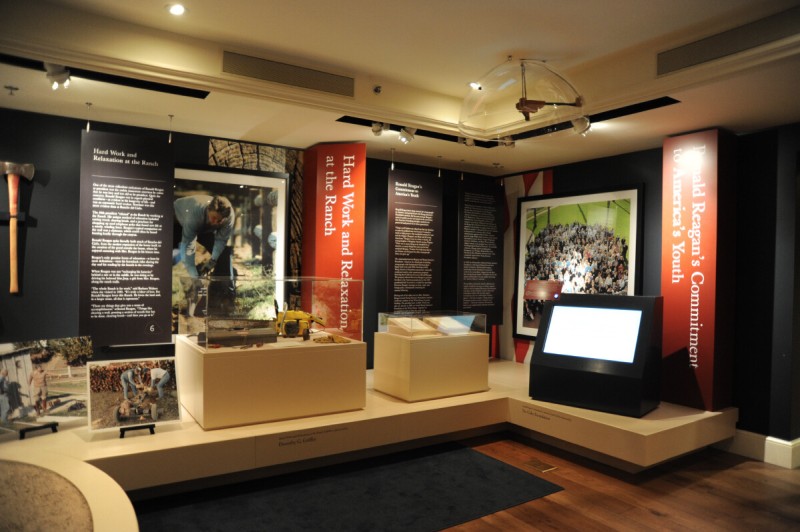
Originally there was only a small adobe house on it. He added on to the original house, and did some of the actual construction, like laying tiles, himself. He enjoyed physical work at the ranch. Eventually there were a few more buildings, though all modest in size, and in a traditional one-story Spanish colonial style.
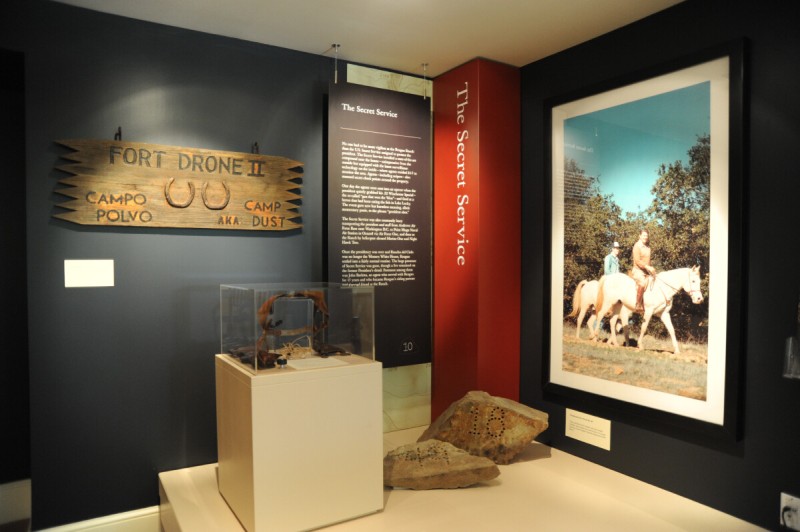
The Seabees did much of the construction of the federal buildings and structures on the property when he became president. The Secret Service would keep watch from Snipers Point, where there was a good view of the grounds.
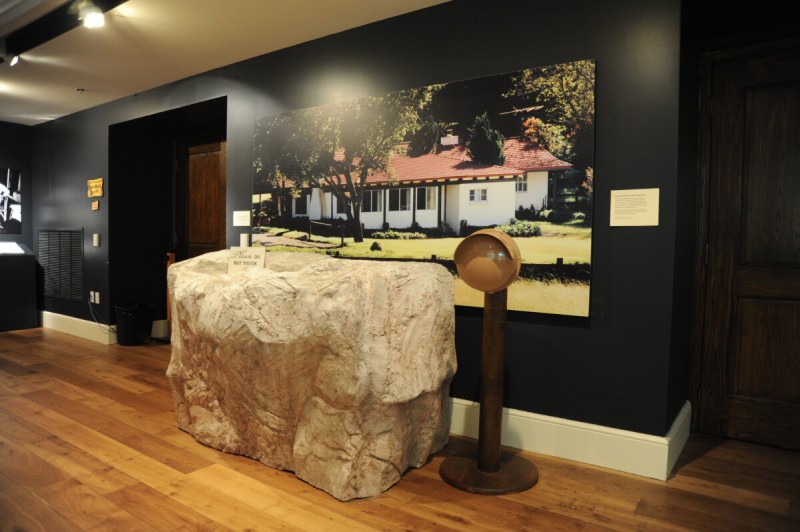
Displays show the microwave motion sensor systems, hidden in fake rocks, made by Walt Disney Studios.
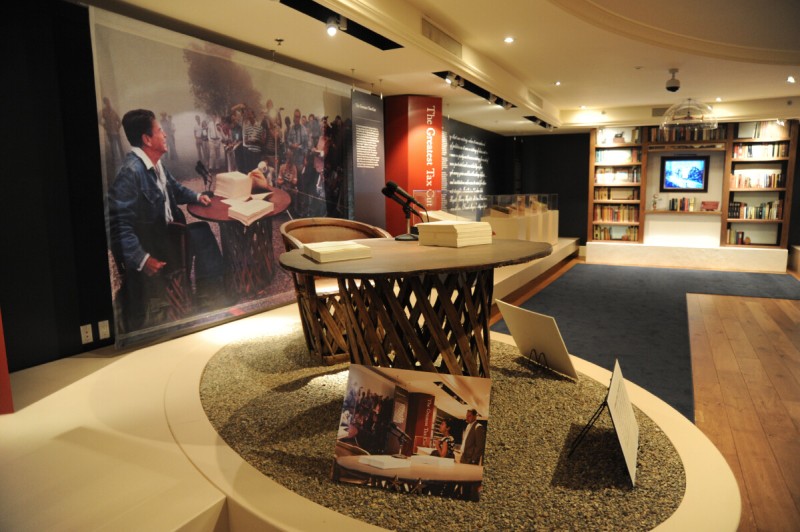
Visitors over the years included Barbara Walters, Queen Elizabeth II and Prince Phillip, Mikhail Gorbachev, and Margaret Thatcher. He would hold press conferences there, and ride horses with businessmen. The site was remote, and roads to it narrow. Most VIPs would come by helicopter.
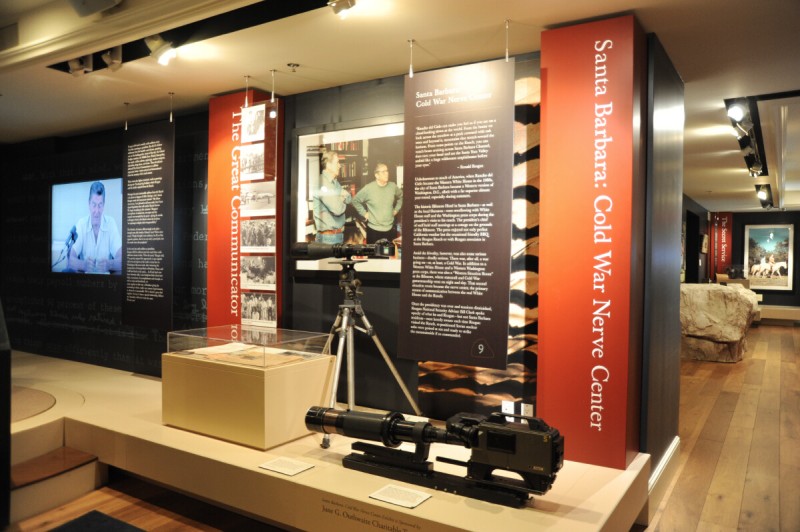
Cumulatively he was there for the equivalent of one year of the eight years he was in the White House. When he was there, Russian submarines are said to have re-aimed their missiles at Santa Barbara.
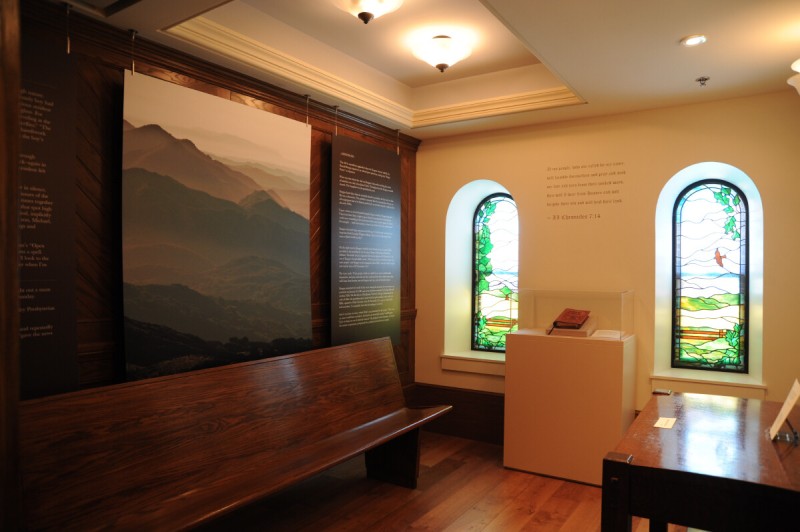
With Alzheimer’s and old age taking a firm and final hold, Reagan visited the ranch for the last time in August, 1995. Rancho del Cielo was the stage set for his public-image, self-image, and his personal terroir.
